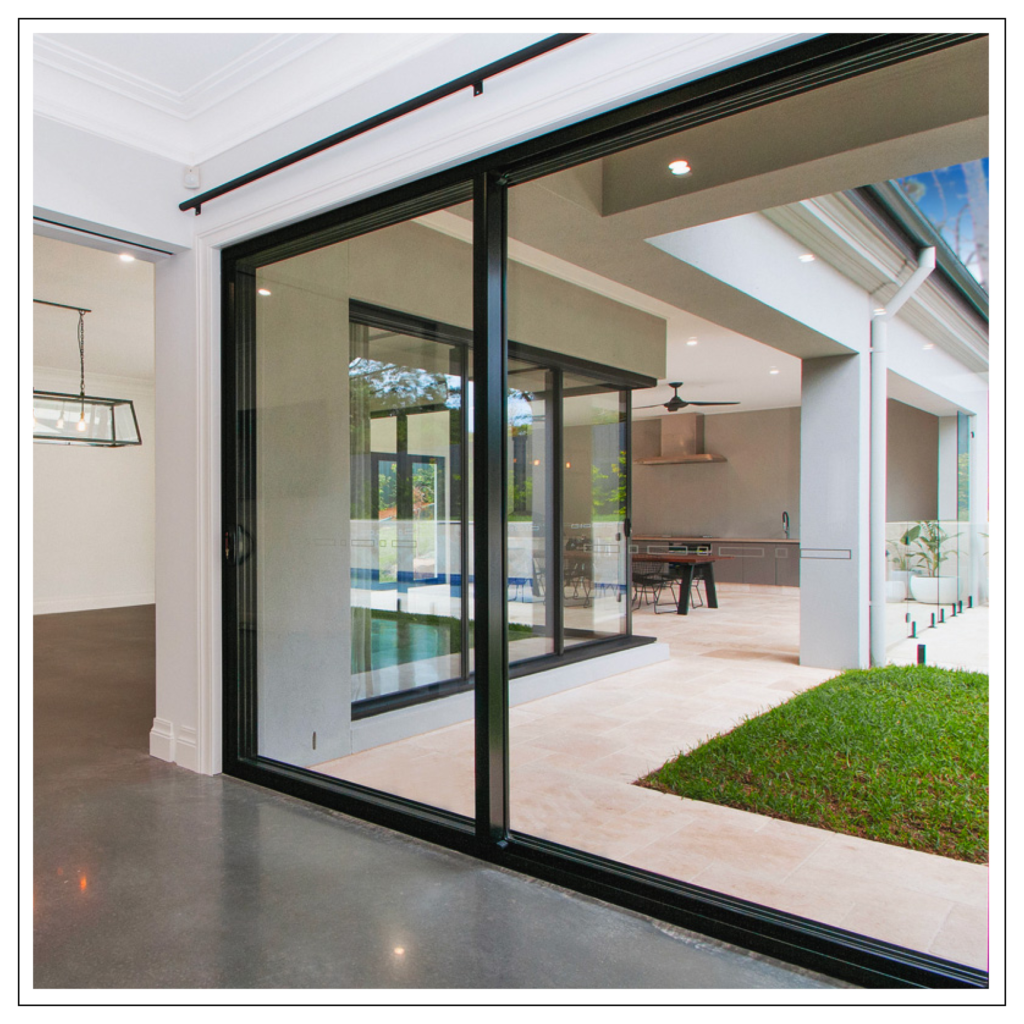
Aluminium sliding doors have become a popular choice in modern architecture and interior design, thanks to their sleek appearance, durability, and versatility. Whether you’re looking to enhance the aesthetics of your home or improve its functionality, aluminium sliding doors offer a range of benefits that make them an excellent option. This guide will delve into the advantages, types, installation process, and maintenance tips for aluminium sliding doors.
Advantages of Aluminium Sliding Doors
- Aesthetic Appeal: Aluminium sliding doors feature slim frames that maximize glass surface area, allowing for unobstructed views and ample natural light. Their sleek and modern design complements various architectural styles.
- Durability and Strength: Aluminium is a robust material that can withstand harsh weather conditions without warping, rotting, or corroding. Its strength allows for larger door panels, providing expansive views and greater light entry.
- Energy Efficiency: Modern aluminium sliding doors come with thermal break technology, which improves their insulation properties. When paired with double or triple glazing, these doors can significantly reduce heat loss and improve energy efficiency.
- Low Maintenance: Unlike wood, aluminium does not require frequent painting or varnishing. It is resistant to rust and corrosion, making it a low-maintenance option. A simple periodic cleaning is usually sufficient to keep the doors looking new.
- Versatility: Aluminium sliding doors can be customized to fit a variety of spaces, including large openings in living rooms, bedrooms, or commercial buildings. They are available in multiple finishes and colors, allowing for personalization to match any decor.
Types of Aluminium Sliding Doors
- Standard Sliding Doors: These doors consist of two or more panels that slide horizontally on tracks. They are ideal for spaces where you want to maximize the opening without taking up additional room.
- Lift-and-Slide Doors: These doors are designed to lift off their tracks when opened, providing a smooth operation. They offer excellent sealing properties, making them suitable for areas with extreme weather conditions.
- Bi-Fold Sliding Doors: Also known as folding sliding doors, these doors fold back in sections to create a wide opening. They are perfect for connecting indoor and outdoor spaces, providing a seamless transition.
- Corner Sliding Doors: These doors are designed to open at a corner, creating a larger opening and an unobstructed view. They are ideal for homes with panoramic views or for creating a dramatic architectural feature.
Installation Process
- Measurement and Planning: Accurate measurement of the opening where the door will be installed is crucial. Consider the space required for the door panels to slide and ensure there is enough structural support.
- Preparation: Remove any existing doors and frames, and clean the opening. Ensure the floor is level and the walls are plumb to facilitate smooth installation.
- Frame Assembly and Installation: Assemble the aluminium frame according to the manufacturer’s instructions. Position the frame in the opening, and use shims to ensure it is level and square. Secure the frame to the surrounding structure using appropriate fasteners.
- Panel Installation: Install the sliding door panels onto the tracks. Adjust the rollers to ensure smooth operation and proper alignment.
- Sealing and Finishing: Apply weatherstripping to seal any gaps between the frame and the wall. Install any additional hardware, such as handles and locks. Test the doors to ensure they slide smoothly and lock securely.
Maintenance Tips
- Regular Cleaning: Clean the aluminium frames and glass panels regularly using a mild detergent and water. Avoid using abrasive cleaners that could scratch the surface.
- Track Maintenance: Keep the tracks free of debris and dust. Periodically vacuum the tracks and wipe them with a damp cloth to ensure smooth operation.
- Lubrication: Lubricate the door rollers and tracks with a silicone-based lubricant to maintain smooth movement. Avoid oil-based lubricants as they can attract dirt and grime.
- Inspection and Repair: Regularly inspect the doors for any signs of wear or damage. Check the seals and weatherstripping for any deterioration and replace them if necessary.
Conclusion
Aluminium sliding doors are an excellent choice for enhancing the aesthetic appeal and functionality of any space. Their durability, low maintenance, and energy efficiency make them a practical and stylish solution for modern homes and commercial buildings. By understanding the types, installation process, and maintenance tips, you can make an informed decision and enjoy the benefits of aluminium sliding doors for years to come.
4o






